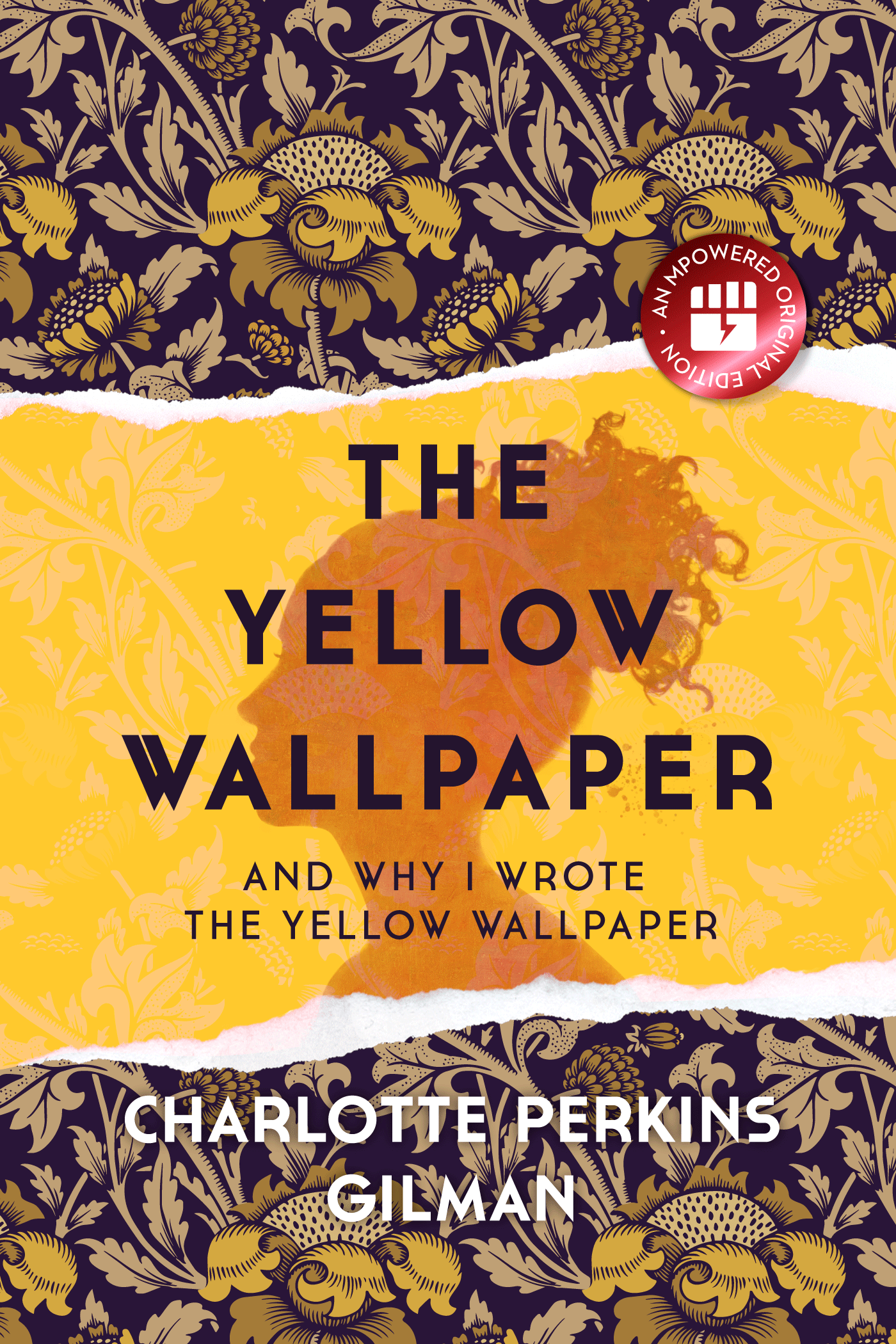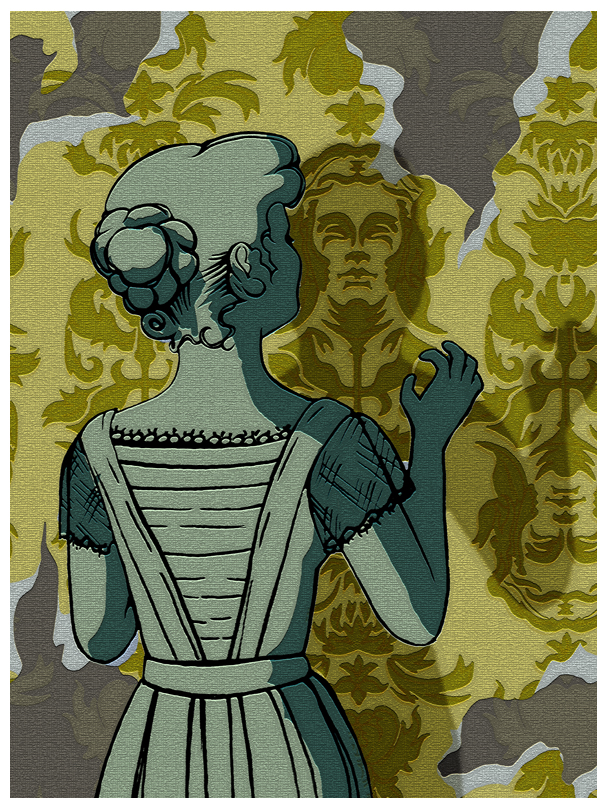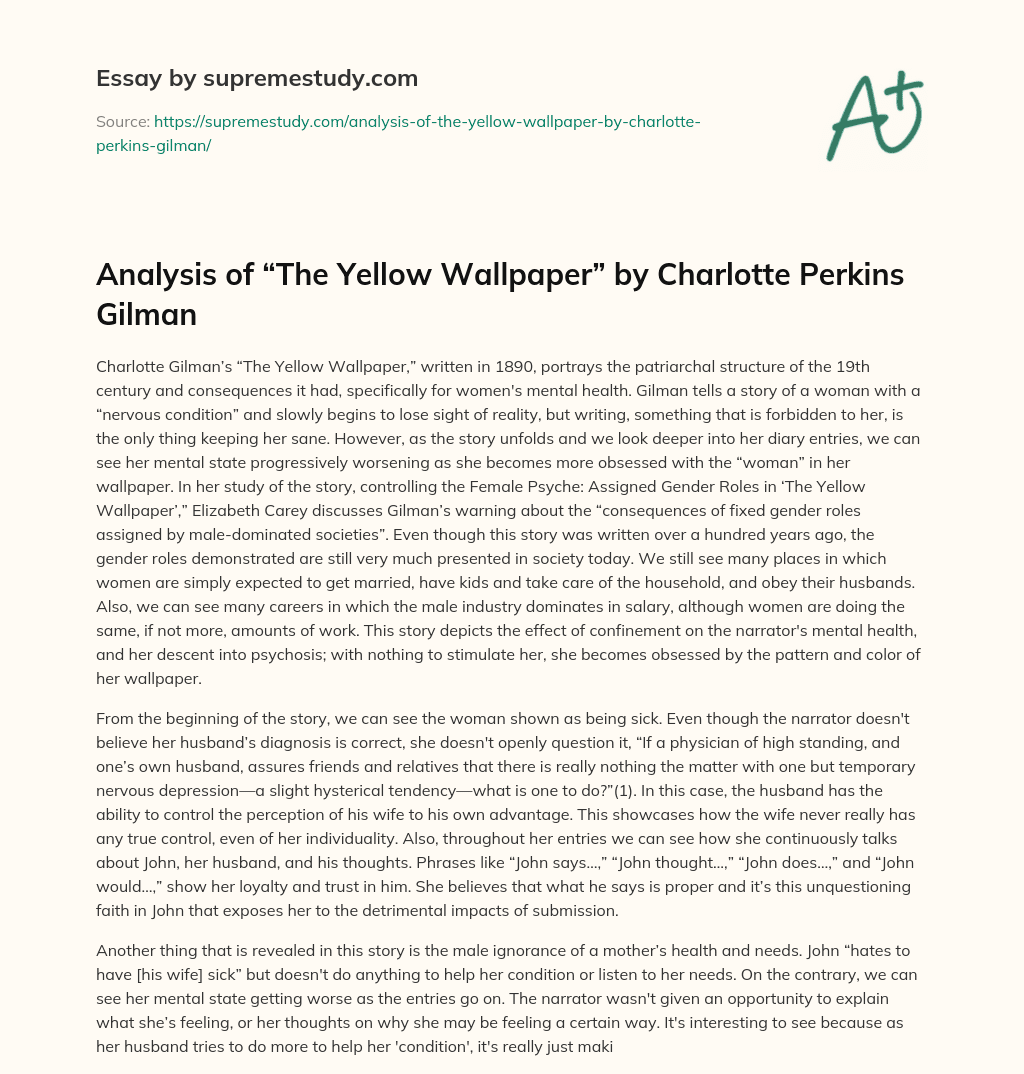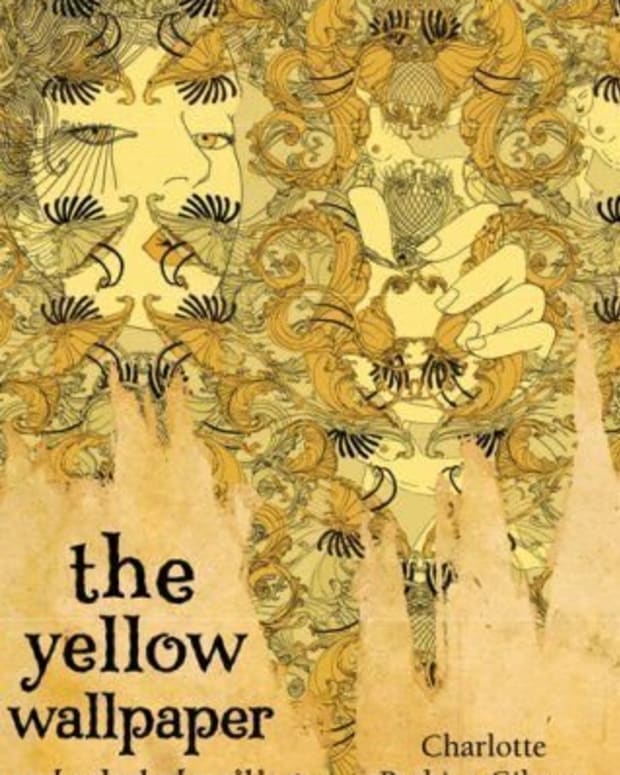The Crumbling Partitions of Sanity: Exploring Highly effective Quotes in Charlotte Perkins Gilman’s "The Yellow Wallpaper"
Associated Articles: The Crumbling Partitions of Sanity: Exploring Highly effective Quotes in Charlotte Perkins Gilman’s "The Yellow Wallpaper"
Introduction
With enthusiasm, let’s navigate by way of the intriguing subject associated to The Crumbling Partitions of Sanity: Exploring Highly effective Quotes in Charlotte Perkins Gilman’s "The Yellow Wallpaper". Let’s weave attention-grabbing data and provide recent views to the readers.
Desk of Content material
The Crumbling Partitions of Sanity: Exploring Highly effective Quotes in Charlotte Perkins Gilman’s "The Yellow Wallpaper"

Charlotte Perkins Gilman’s "The Yellow Wallpaper" is a chilling masterpiece of psychological realism, a narrative that resonates with readers even over a century after its publication. The novella’s energy lies not solely in its unsettling narrative of a girl’s descent into insanity but in addition within the potent language Gilman employs to convey her protagonist’s deteriorating psychological state. The rigorously chosen phrases, phrases, and sentences act as fragments of a shattered thoughts, mirroring the narrator’s growing disconnection from actuality. Analyzing key quotes reveals the depth of Gilman’s artistry and the lasting affect of her critique of patriarchal societal buildings and their devastating results on ladies’s psychological well being.
One of the crucial hanging elements of the narrative is the narrator’s unreliable perspective. This unreliability is cleverly woven into the textual content by way of the very language she makes use of. The preliminary strains, as an illustration, set up a way of managed statement, even a touch of indifferent academicism: "I’ve been writing all day, and I really feel pretty worn out. It’s so restful to lie completely nonetheless and let the solar bathe one’s face." This seemingly innocuous opening instantly hints on the narrator’s enforced idleness, a key ingredient contributing to her decline. The "restful" stillness will not be a selection however a prescribed routine, a delicate indication of the oppressive management exerted upon her. The very act of writing, which could usually recommend company and self-expression, is introduced right here as exhausting, additional highlighting her constrained existence.
Because the story progresses, the narrator’s language turns into more and more fragmented and symbolic. Her descriptions of the wallpaper, as an illustration, evolve from goal observations to subjective interpretations, mirroring her personal unraveling psyche. Initially, she describes it as "a smouldering unclean yellow," an outline that already suggests one thing unsettling and oppressive. Nonetheless, as her psychological state deteriorates, her notion of the wallpaper transforms: "It’s boring sufficient to confuse the attention in following, pronounced sufficient consistently to annoy and provoke examine, and if you comply with the lame unsure curves for slightly distance they instantly commit suicide—plunge off at outrageous angles, destroy themselves in unheard-of contradictions." This passage showcases the narrator’s rising obsession with the wallpaper, her language changing into more and more erratic and reflecting her personal fractured psychological panorama. The "lame unsure curves" and the "outrageous angles" mirror her personal disorientation and the chaotic nature of her ideas. The wallpaper’s "suicide" and "self-destruction" are projections of her personal emotions of self-annihilation.
The narrator’s relationship along with her husband, John, is one other essential ingredient explored by way of highly effective quotes. John, a doctor, represents the patriarchal authority that confines and silences her. His dismissive perspective in direction of her sickness is obvious in his condescending remarks: "If a doctor of excessive standing, and one’s personal husband, assures buddies and kin that there’s actually nothing the matter with one however momentary nervous melancholy—a slight hysterical tendency—what’s one to do?" This quote encapsulates the patriarchal medical system’s silencing of girls’s experiences. John’s analysis minimizes her struggling, dismissing her as merely "hysterical," a standard analysis used to pathologize ladies’s emotional misery. His authority, each as a physician and as her husband, successfully invalidates her subjective expertise and reinforces her powerlessness.
The narrator’s growing isolation is additional emphasised by way of her repeated references to her confinement and her eager for freedom. The phrase "relaxation remedy," initially introduced as an answer, turns into synonymous along with her imprisonment: "I lie right here on this nice immovable mattress—it’s nailed down, I consider—and comply with that sample about by the hour. It’s nearly as good as gymnastics, I guarantee you." The ironic tone is palpable. What is supposed to be restorative turns into a torment, a bodily and psychological jail. The mattress, described as "immovable" and "nailed down," symbolizes her trapped state, whereas the obsessive deal with the wallpaper represents a determined try to flee the confines of her actuality.
The narrator’s rising identification with the girl she perceives trapped behind the wallpaper is a robust metaphor for her personal wrestle for liberation. The quote, "I’ve received out finally," stated after she tears down the wallpaper, will not be merely an announcement of bodily motion however a declaration of psychological freedom, albeit a freedom achieved by way of a descent into insanity. This last act of riot, nevertheless harmful, represents a robust rejection of the constraints imposed upon her. The wallpaper, initially a logo of oppression, turns into a automobile for her liberation, albeit a twisted and tragic one. The ultimate sentence, "I’ve pulled off a lot of the paper, so you possibly can’t put me again!" showcases the final word defiance of the patriarchal buildings which have confined her.
The usage of nature imagery additionally contributes considerably to the story’s affect. The narrator’s confinement is juxtaposed with the colourful pure world exterior, which she will solely observe from her window. This distinction additional emphasizes her sense of imprisonment and her craving for freedom. The descriptions of the backyard, the creeping vines, and the daylight develop into symbolic representations of her eager for vitality and liberation. The very act of observing nature from her confined house underscores the irony of her state of affairs.
Moreover, the repetitive nature of the language itself mirrors the repetitive nature of the narrator’s confinement and her descent into insanity. The fixed return to the wallpaper, the repetitive patterns she observes, and the repetitive phrasing in her narration all contribute to the general sense of claustrophobia and psychological deterioration. This stylistic selection will not be merely a stylistic system however a vital ingredient in conveying the narrator’s psychological state.
In conclusion, the facility of "The Yellow Wallpaper" lies in its masterful use of language. The rigorously chosen quotes, from the preliminary managed observations to the ultimate determined cry for freedom, paint a vivid and disturbing image of a girl’s wrestle in opposition to the constraints of patriarchal society and the devastating penalties of its oppressive forces. The story’s lasting affect stems from its means to show the insidious nature of societal norms that silence and invalidate ladies’s experiences, leaving a haunting legacy that continues to resonate with readers immediately. The quotes serve not merely as descriptive components however as highly effective instruments that expose the fragility of the human psyche when subjected to extended oppression and the devastating penalties of ignoring the cries for assist from these whose voices are systematically silenced. Gilman’s skillful use of language permits readers to expertise the narrator’s descent into insanity, making the story a robust and unforgettable testomony to the significance of acknowledging and addressing the psychological well being wants of all people, notably ladies, inside a simply and equitable society.








Closure
Thus, we hope this text has offered useful insights into The Crumbling Partitions of Sanity: Exploring Highly effective Quotes in Charlotte Perkins Gilman’s "The Yellow Wallpaper". We hope you discover this text informative and helpful. See you in our subsequent article!